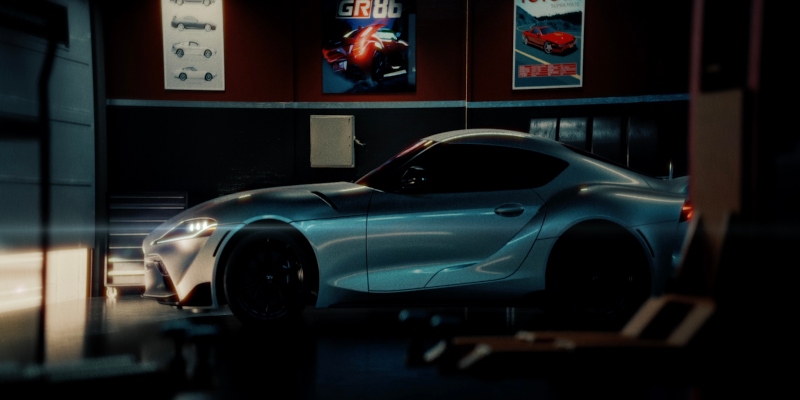
Virtual production specialists Impossible Objects recently completed The Chase and Something Real, two spots in a new campaign for the Toyota Supra via Intertrend/Saatchi & Saatchi, leveraging game development technology for real-time photoreal CG. The campaign was produced by Lockt Editorial, in partnership with Impossible Objects, and was directed by Impossible Objects director Miles Cable.
“Once we convinced the agency to take the leap into virtual production, they were amazed at how fast we could visualise the spot. Working virtually with our cityscape environment, when the car was lit and its textures were roughly in place in Unreal Engine, we were able to share cuts and make edits in real time. Then with the animation and camera moves in place, the client was able to iterate on the spots as they were very close to final. This is worlds away from the grayscale and wireframes that they’re used to reviewing in conventional CG and heavy VFX productions,” said Cable.
Both spots are almost entirely CG, featuring high performance street racing and chase scenes that would have been impossible to shoot on busy city streets and highways given the commercial budget and timeline. The live-action elements of the spots include car interiors and shots of the drivers. The Impossible Objects team used Epic Games’ Unreal Engine to generate background plates for live action composites of the driver. Using virtual production allowed the team to work on pre-visualisation, production and editorial simultaneously, giving the client a clear vision of how the spot was progressing and what the finals would look like.
All iterations of the spots including the lighting pass were done in Unreal Engine, Maya was used to prep and rig the cars that originated as high-fidelity CAD files from Toyota. For the final render, the team used Path Tracing to render out of Unreal powered by NVIDIA RTX A6000 and A4500 graphics cards, delivering much higher quality and a huge workflow advantage. The Unreal renders were handed off to Lockt who added particle effects including smoke, lens flares and rain in Nuke and Houdini.
